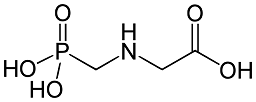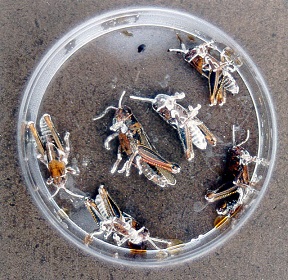As a human species, we are caught in a permanent struggle with nature. It disturbs our careful agriculture and grows weeds; they adapt to our herbicides: resistance. Moreover, nature reverts to resistance as we develop smart methods to fight illness. It forces us to innovate again and again – permanent innovation. A battle is going on! Is there a loophole to escape from this? We think not.

Our knowledge of nature has its limitations. For nature never stops developing. With our best herbicides, for instance glyphosate, we can kill almost all plants. Indeed: almost. A very small proportion of those plants has a genetic makeup that allows them to stay alive. And precisely that very small proportion can cause trouble in the long run: its offspring can no longer be killed by our weedkiller. The principle of resistance. Such an offspring can no longer be controlled by the same substance. So then, we need to use another substance – on and on. Several dozens of plant varieties have become resistant to glyphosate.
Leaf-cutting ants
But perhaps we could do better in practice than in theory? We can have a look at leaf-cutting ants. They weapon themselves with antibiotics, extracted from fungi that grow on leaves that they carry into their nests. They innovate all the time. They form a community, together with the leaf-digesting fungi. This system is being defended against hostile fungi by bacteria that secrete antifungal chemicals. They command an entire arsenal of such chemicals. If resistance looms, the bacteria revert to another member of this family. In doing so, they prevented resistance for millions of years. But the system isn’t perfect. From time to time, the fungi wage a victory – that may kill entire ants’ nests.
We humans cannot afford to sacrifice entire communities from time to time, just because of shortages in our technological knowledge. And yet, our system isn’t that much different. Continually, we develop new substances to defend ourselves against hostile creatures. Herbicides against troublesome herbs. Insecticides against toxic insects. Antibiotics against pathogenic bacteria. In an everlasting attempt to outsmart their natural resistance. We even might arrive at the point where we could ‘revive’ an almost forgotten herbicide, insecticide or antibiotic; if the defence against this substance has almost disappeared.

Permanent innovation
Here, permanent innovation is the all-pervasive mechanism. Innovation, through which we come up with new solutions for old problems all the time. Solutions for which – in this case – nature has almost ‘forgotten’ the defensive reaction (the resistance). Permanent innovation was economy’s buzzword. A company that innovated much would take the lead on its competitors as a matter of course. Likewise in the case of the innovative country. Important committees were installed that would advise on how to improve the ‘innovative climate’ of a country. Good for the economy, good for people’s welfare. Economies with much innovation potential would in the end get the upper hand in the economic rat race.
But here, we formulate another framework for permanent innovation. Here, the subject isn’t the competition with other companies or economies, but the ‘struggle with nature’. A ‘competition’ that hasn’t any clear outcome from the outset. For nature has almost limitless opportunities for renewal of its defence mechanisms. But who knows, maybe we humans are a smart kind as well? We almost take pride in finding a solution for every problem we run into. Therefore, maybe the subject of this competition is not a ‘struggle’ with nature, but precisely the opposite, cooperation. A cooperation in which we will copy the very mechanisms of our ‘opponent’, to the benefit of both, humankind and nature.
Limits to the innovation process
But now, this process is on the verge of going wrong. Economic mechanisms disturb the process. In eighty years’ time, discovering and testing antibiotics has become ever more expensive; as a result of that, this process of permanent innovation has almost come to a stand-still. Only the major companies can still afford the process. That creates two problems. Firstly, discovering new antibiotics has slowed down a lot. With the effect that our power to find solutions has been weakened; and moreover, that the number of untreatable infections rises. Secondly, this process of increasing cost has the effect that only the major companies can still afford to spend the towering costs of testing new substances. Again, with the effect that in the future, the number of newly developed medicines will be lower than in the past. And then we don’t even mention the problems of an oligopoly: market power, price rises, super profits. An undesirable effect in any sector. Particularly if our health is at stake.
Why then do development costs of a new antibiotic substance rise so fast? We don’t really know. Finding a new medicine isn’t the problem really – that work can be done by small companies as well. Testing however seems to be the main problem. Have requirements for new medicines become much stricter? Did lab wages rise? Does testing take longer than in the past? The upshot of this process is clear however: a movement towards less antibiotics producers. Large companies result from mergers; they are the only ones that can come up with the major development costs. But this severely reduces permanent innovation. Whereas – as said – we need permanent innovation in this field.

Herbicides and pesticides
In the field of herbicides and pesticides, this development does not take place, and that adds to our wonder. A recent article mentions the market introduction of over one hundred new substances: fungicides, insecticides, eelworm killers, herbicides. Many of them on the basis of a new mode of action. Most of these new substances are harmless to health and the environment, a property that is much valued nowadays. And in these fields of application, new agents are very important in resistance prevention. Like with herbicides, in order to overcome glyphosate resistance.
And here, another important change takes place: from toxic to biological agents. For the time being, we are still stuck with the toxic compounds; but from 1990 onwards, we can also use a new mechanism: RNA interference (RNAi). This technology enables us to prevent the common function of RNA: providing recipes for the production of proteins. By using RNAi, we can be very specific in preventing the production of certain proteins, for instance proteins that are characteristic for a harmful insect. Technical research institutes like Lux Research expect this mechanism to become as important as the use of chemical toxins in twenty years’ time.
Our prospects are limited
This is a hopeful development. But we cannot just wait and see this happen. On the contrary, the positive prospects result exclusively from the permanent innovation of pesticides, herbicides and fungicides. And ultimately, this process will never end – that’s what we have discovered in the past few decades. A process that we set in motion ourselves, by starting a competition with nature. Competition with pathogens in the case of antibiotics. With weeds in the case of weed killers. With insects in the case of insecticides. Nature has almost limitless opportunities in finding new solutions. And although we, mankind, are quite innovative, this confrontation will require the utmost of our capabilities.
But we shouldn’t let ourselves be demotivated. Our capabilities may not be limitless, but they extend quite far. It may be helpful if we don’t treat nature any longer as an adversary, that we need to restrict or even conquer. But as a partner in a common project: the development of our Earth. She will not be an easy partner, one with a will and characteristics of her own. Different from our traditional thoughts about her. But still, we can fathom this partner, and we can cooperate with her. And we are just at the start of this process of fathoming and cooperation.
Research should go on
Ultimately, this discussion leads us to an agenda for scientific research. Both theoretical and practical research. Research that contains the following items:
- What kind of systems transcend our (detailed) knowledge, and how can we still make use of them?
- Are huge data repositories and artificial intelligence our tools, or do they just add to our traditional reductionism?
- How can we unravel the biological cell? Can we even construct a new and viable cell from well-defined components?
- Practical use of stem cells and other form of cell therapy. Use of organoids in research and therapy, and transplant in different forms. Further development of immunotherapy
- Funding for fundamental research in these subjects
- Ethical research into cloning, stem cell research, application on humans of genetic techniques
- How can we stimulate innovation by smart investments?
- How will we be able to prevent doomsday scenarios?
- Where does our insight into major changes in fields like energy, food and feed, materials, medicines, change to empirical knowledge? Where do these fit in and find a wholesome equilibrium with the whole?
- While at the same time, we keep up the equilibrium with nature, internationally and up to the highest level?
Permanent innovation, we need it
Innovation is a difficult issue. It isn’t easy to turn off the mechanisms that cause innovative research not being done anymore. And yet, we still need to develop new antibiotics. It is important to our society to devise and use the mechanisms that will facilitate this.
Interesting? Then also read:
Psychology of innovation: biotechnology should learn to listen!
Towards precision agriculture with less environmental impact
Innovation: the state bears the risk, companies reap the benefits
